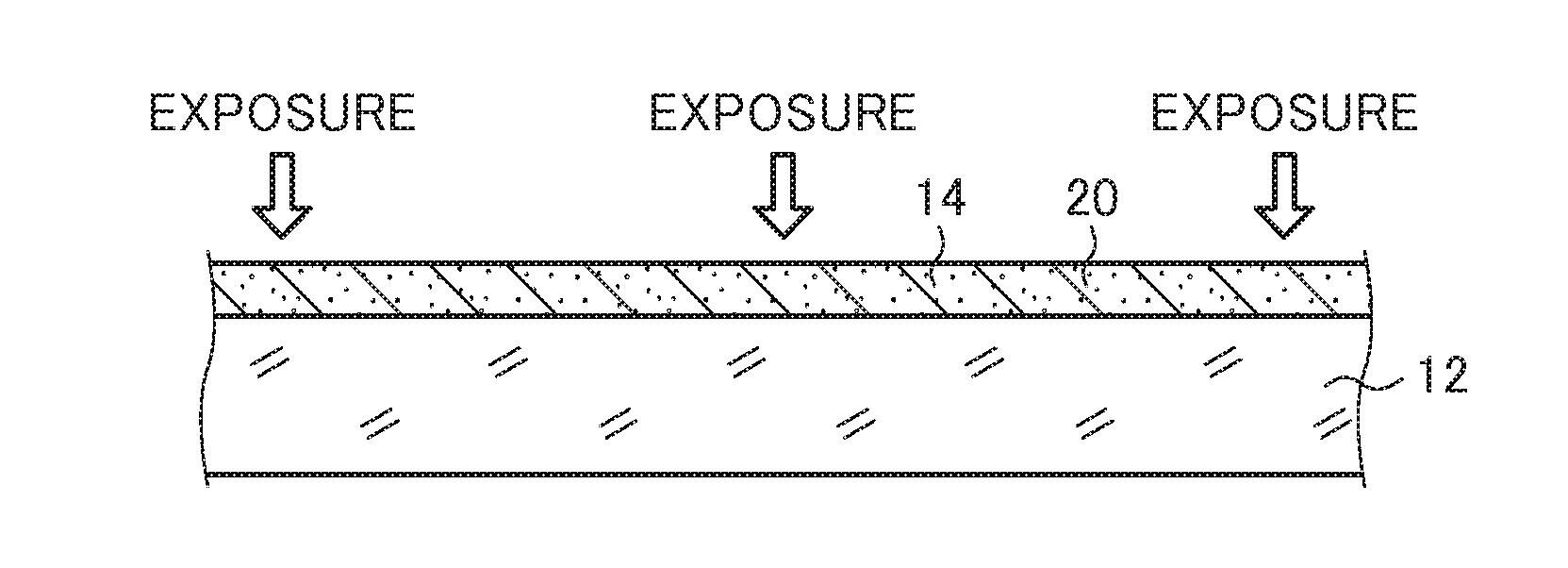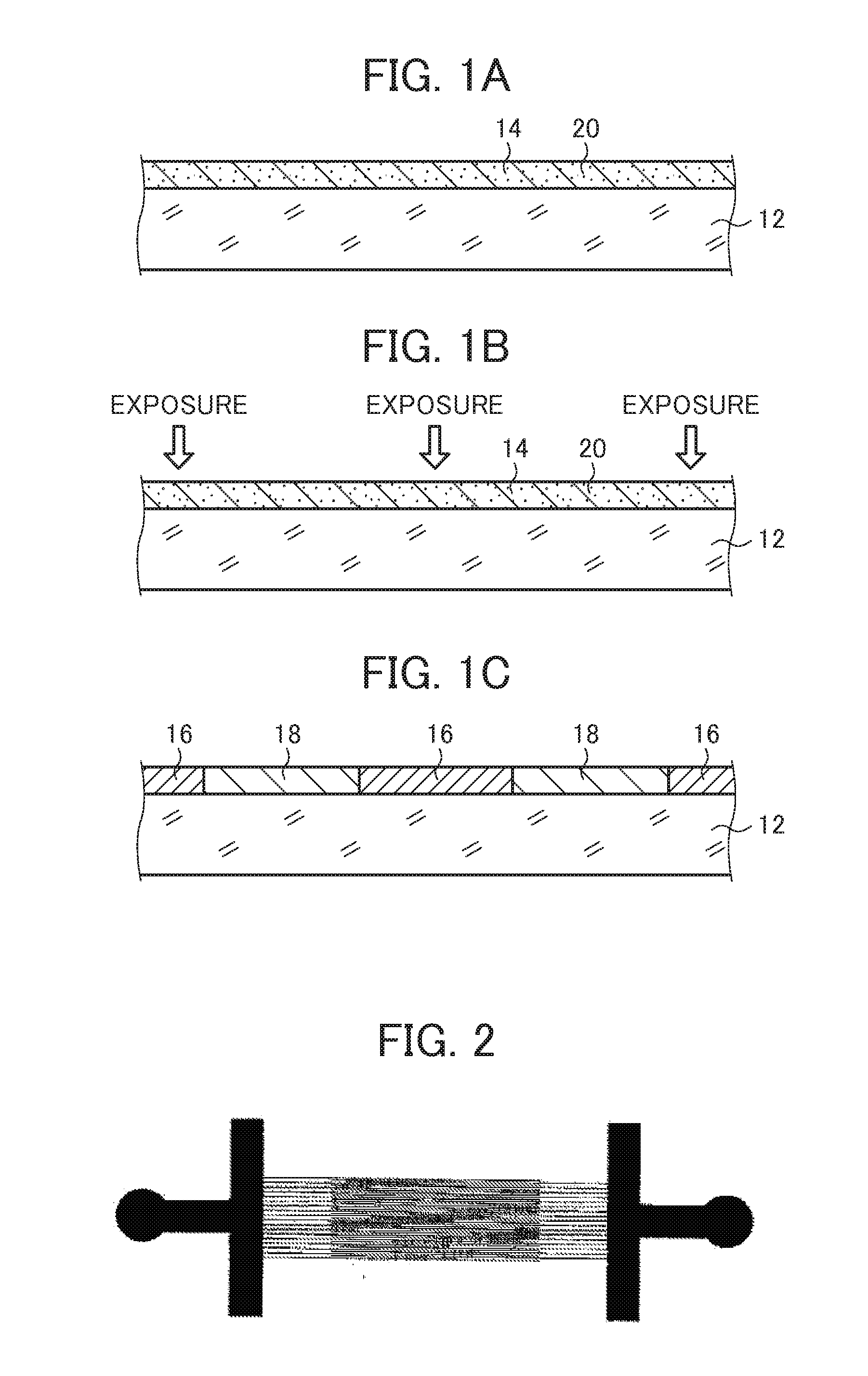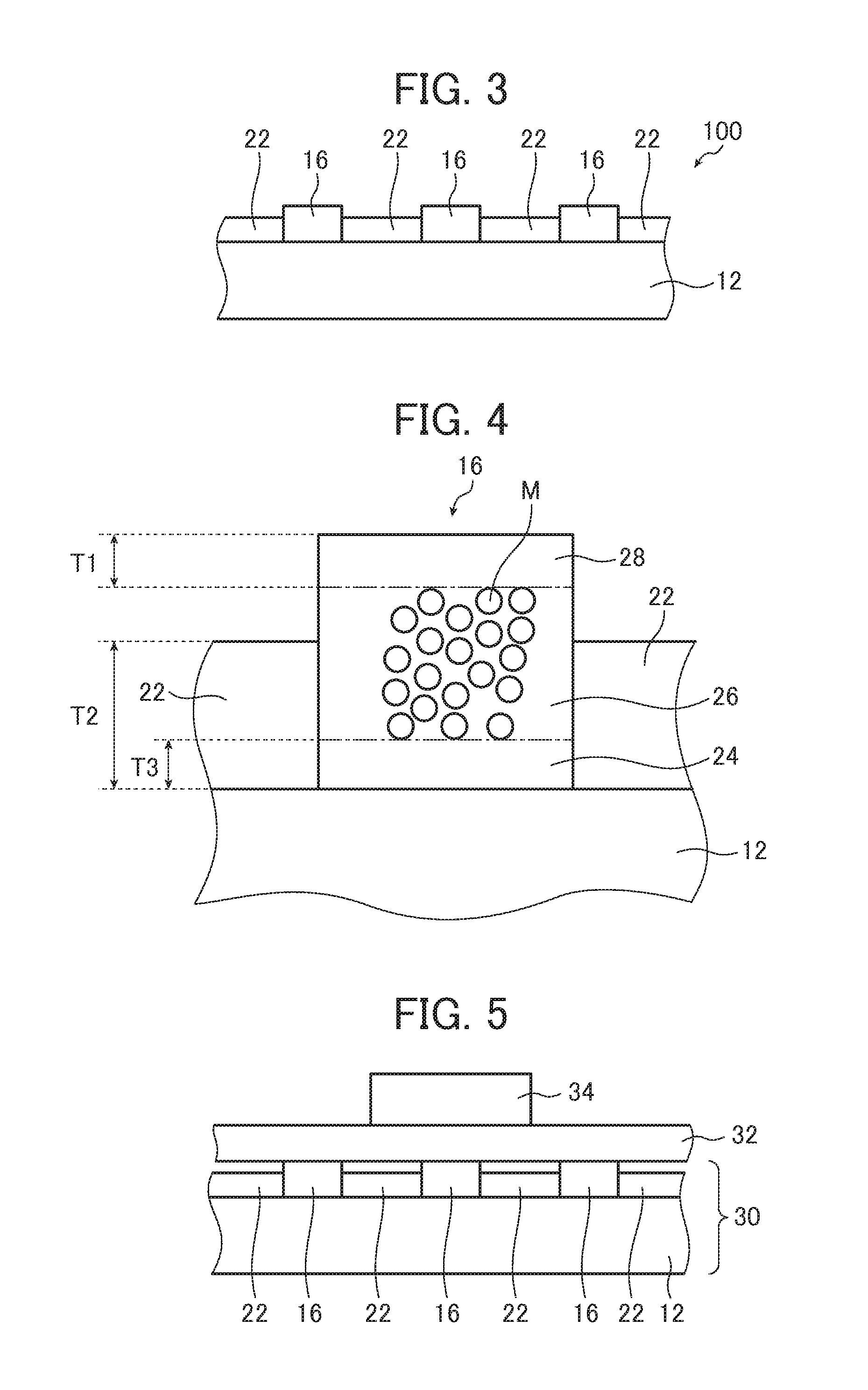Manufacturing method of conductive sheet and conductive sheet
- Summary
- Abstract
- Description
- Claims
- Application Information
AI Technical Summary
Benefits of technology
Problems solved by technology
Method used
Image
Examples
example 1
Preparation of Silver Halide Emulsion
[0314]To the following liquid 1 held at 38° C. and pH 4.5, the following liquid 2 and liquid 3 were simultaneously added for 20 minutes while being stirred, thereby forming nuclear particles having a particle size of 0.16 μm. At this time, each of the liquid 2 and liquid 3 was used in an amount corresponding to 90% of the amount thereof. Thereafter, the following liquid 4 and liquid 5 were added thereto for 8 minutes. Then, the balance of 10% of the following liquid 2 and liquid 3 was added thereto for 2 minutes, and particles were allowed to grow up to 0.21 μm. Moreover, 0.15 g of potassium iodide was added thereto, the resultant was aged for 5 minutes, and then the formation of particles was ended.
[0315]Liquid 1:
Water750 mlGelatin8.6 gSodium chloride 3 g1,3-Dimethylimidazolidine-2-thione20 mgSodium benzene thiosulfonate10 mgCitric acid0.7 g
[0316]Liquid 1:
Water300 mlSilver nitrate150 g
[0317]Liquid 3:
Water300 mlSodium chloride38 gPotassium bromi...
example 2
[0382]Samples were prepared and subjected to various evaluations according to the same procedure as in Example 1, except that the following (Reduction treatment) was performed after the aforementioned (Gelatin decomposition treatment). The results are summarized in Table 1.
[0383](Reduction Treatment)
[0384]The samples were dipped into the following reduction treatment solution for 360 seconds, and then washed with pure water.
[0385](Composition of Reduction Treatment Solution)
[0386]1 L of the reduction treatment solution contained the following compounds.
Hydroquinone0.20 mol / LPotassium hydroxide0.45 mol / LPotassium carbonate0.24 mol / L
example 3
[0387]Samples were prepared and subjected to various evaluations according to the same procedure as in Example 2, except that in the silver halide-containing photosensitive layer, the mixing ratio (polymer / gelatin) of the polymer to the gelatin was changed to 1 / 1 from 0.5 / 1 in terms of mass, and the content of the polymer was changed to 0.44 g / m2 from 0.22 g / m2. The results are summarized in Table 1.
PUM
| Property | Measurement | Unit |
|---|---|---|
| surface roughness | aaaaa | aaaaa |
| thickness | aaaaa | aaaaa |
| thickness | aaaaa | aaaaa |
Abstract
Description
Claims
Application Information
 Login to View More
Login to View More - R&D
- Intellectual Property
- Life Sciences
- Materials
- Tech Scout
- Unparalleled Data Quality
- Higher Quality Content
- 60% Fewer Hallucinations
Browse by: Latest US Patents, China's latest patents, Technical Efficacy Thesaurus, Application Domain, Technology Topic, Popular Technical Reports.
© 2025 PatSnap. All rights reserved.Legal|Privacy policy|Modern Slavery Act Transparency Statement|Sitemap|About US| Contact US: help@patsnap.com



